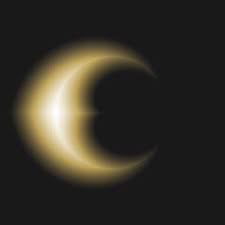
Moon rocks delivered to Earth by Apollo astronauts held a mystery that has plagued scientists since the 1970s: Why were the lunar rocks magnetic?
Earth's rotating, iron core produces the planet's magnetic field. But the moon does not have such a setup.
Now, scientists at MIT think they have a solution. Some 4.2 billion years ago, the moon had a liquid core with a dynamo (like Earth's core today) that produced a strong magnetic field. The moon's magnetic field would have been about 1-50th as strong as Earth's is today, the researchers say.
The MIT team found evidence for the molten-core theory by analyzing the oldest of all the moon rocks that have not been subjected to major shocks from later impacts — something that tends to erase all evidence of earlier magnetic fields. In fact, it's older than any known rocks from Mars or even from the Earth itself.
The rock was collected during the last lunar landing mission, Apollo 17, by Harrison "Jack" Schmitt, the only geologist ever to walk on the moon.
"Many people think that it's the most interesting lunar rock," said MIT's Ben Weiss, who is senior author of a paper on the new finding being published in the Jan. 16 issue of the journal Science.
Weiss and his colleagues used a commercial rock magnetometer that was specially fitted with an automated robotic system to study the rock's faint magnetic traces. The results helped them to rule out the other possible sources of the magnetic traces, such as magnetic fields briefly generated by huge impacts on the moon. Those magnetic fields are very short lived, ranging from just seconds for small impacts up to one day for the most massive strikes.
Rather, the rock readings showed it must have remained in a magnetic environment for a long period of time — millions of years — and thus the field must have come from a long-lasting magnetic dynamo.
That's not a new idea, but it has been "one of the most controversial issues in lunar science," Weiss said.
Until the Apollo missions, many prominent scientists were convinced that the moon was born cold and stayed cold, never melting enough to form a liquid core. Apollo proved there had been massive flows of lava on the moon's surface, but the idea that it has, or ever had, a molten core remained controversial.
Their findings fit in with the prevailing theory that the moon was born when a Mars-sized body crashed into the Earth and blasted much of its crust into space, where it clumped together to form the moon.
Bron: godlikeproductions